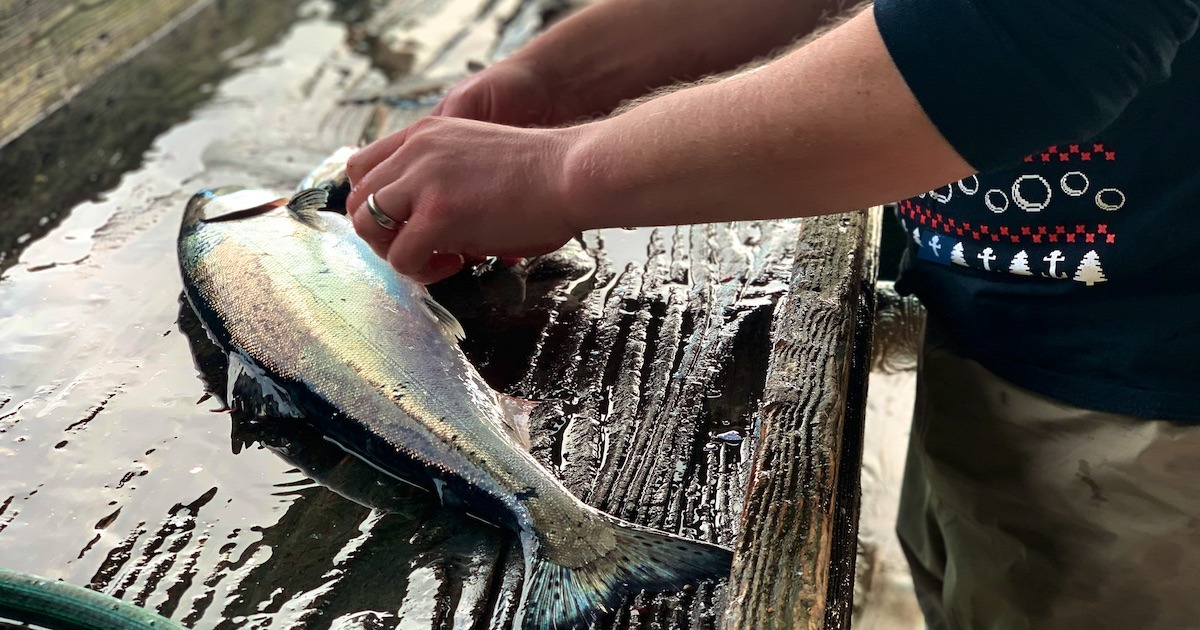
Every year, you’ll hear more and more about winter Chinook. Yet many anglers still don’t take advantage of this wonderful opportunity for a variety of reasons. Along with exploring some of the meat-and-potato tactics of this fishery, I want to address some of the concerns that might be holding you back from enjoying one of my all-time favourite angling opportunities on the island.
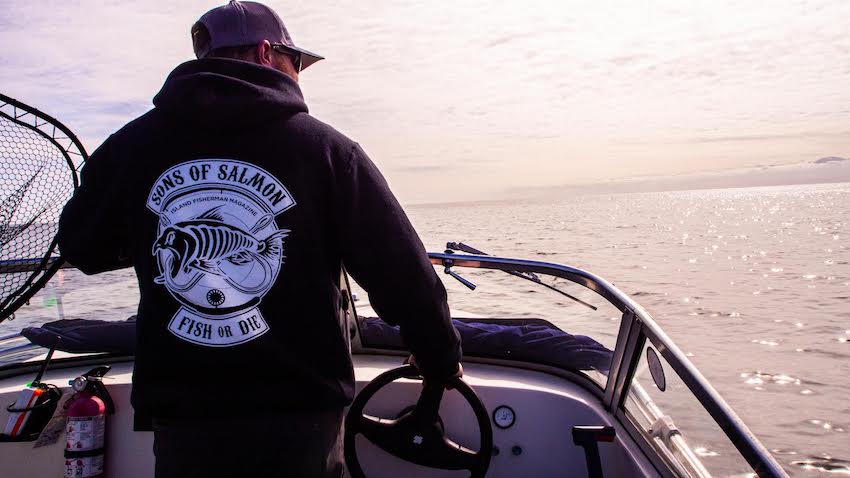
Winter Fishing on Vancouver Island
Winters have come to the coast to feed on spawning herring and other baitfish, like sand lance. Winter Chinook are 2 to 3 years old; it will be another year or more before they are ready to spawn. When they are on the feed, it can be an aggressive bite and, pound for pound, they put up a strong fight.
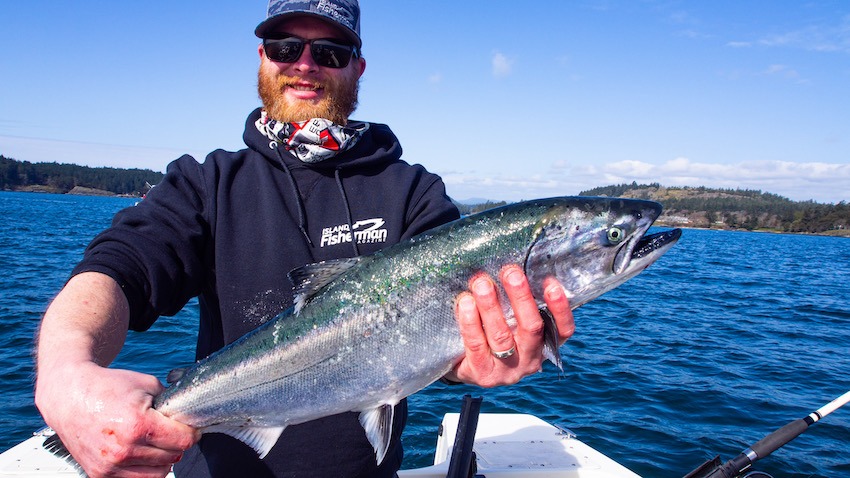
Author Mike Hindley Winter Fishing for Chinook
Targeting Winter Chinook: The Basics
You will commonly find winter Chinook deep; flat bottom structures with sand and eelgrass are a favourite. In this environment, the fish will be right on the bottom, satisfying their hunger on a buffet of Pacific sand lance. They can also be found chasing eulachon, northern anchovy, herring, and small squid around rocks and kelp beds, close to shore.
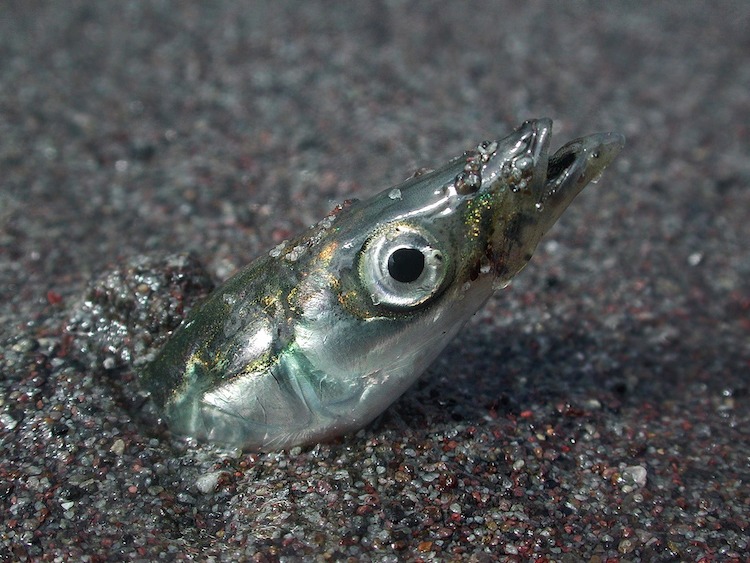
Pacific sand lance (Ammodytes hexapterus) burrowing into the sand Credit: Mandy Lindeberg, NOAA/NMFS/AKFSC Public Domain
Interested in learning about bottom bouncing and fishing with sand lance lures? Click here for “deep dive” Island Fisherman article.
Imitating Bait
The standard advice “any colour as long as it’s green” is reliable. Other colours will work on these hungry feeders, but I always have the most luck on green. The actual shade of green that entices a bite can vary from one day to the next, which is why I like flashers with a colour combination such as the lemon-lime green blade. Some of my most productive lures are Gibbs Skinny G and Wee G spoons in various patterns that incorporate greens, white, black, and to a lesser extent, orange and red. Coho Killer spoons and needlefish hoochies are ideal when smaller bait is around.

Winter Chinook Fishing Lure
Plugs are a good choice in areas where herring schools are passing through. My top producers are the 4″ & 5″ Tomic 602uvbii and the green and white Tomic 632 with glow.

602 uvbiij
Plugs can be fished without a flasher for maximum enjoyment. Of course, jigging can be quite productive as well, and it is a great way to work the water column vertically. Buzz Bombs, Lil’ Nibs, and Mac Deep jigs all work well. Glow elements on your lure are helpful for fishing deep during those dark winter days.

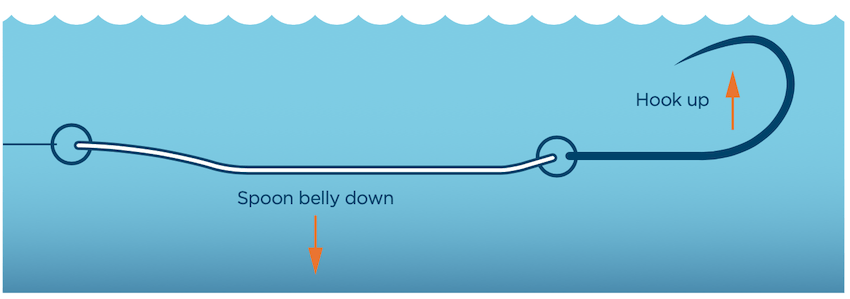
How to troll your lure along the bottom of the seabed
Shorten your leader length down to 40″ for spoons and 36″ for hoochies, and bump the speed up to between 2.5 and 3.5 mph. While anchovy in teaser heads may have been the hot item into the late summer, I don’t bother with it in the winter. It will still work, but I find winter Chinook will bite on artificial lures just as much as anything else. If you happen to have some bait leftover from summer that is looking a little worse for wear, try putting a small piece of anchovy or herring strip on the top hook of your hoochie. I find this technique can help elicit a bite, especially when I’m on the kayak and can’t always maintain a fast-trolling speed.
Getting on the Water for Winter BC Salmon Fishing
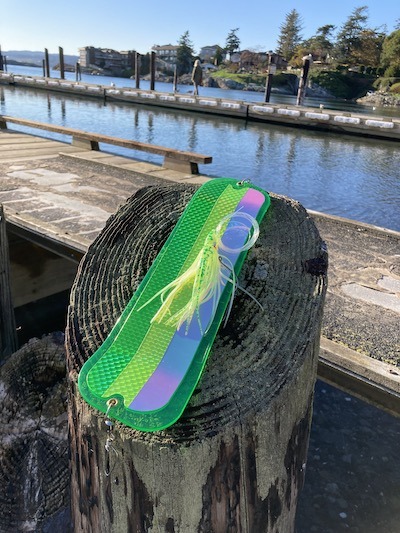
Trolling Setup with Hoochie for Winter Chinook Fishing
Many of the anglers I know winterize their boats after the labour day or Canadian Thanksgiving weekend, and don’t want the hassle or expense of doing it all over again until the same time next year. Don’t let that stop you from getting on the water. There are a few ways to overcome this hurdle. The first —and probably easiest—is to book a charter. Many local charters around Sooke and Victoria operate year-round and have very reasonable rates throughout the “off” season. Even if you’re an avid angler, a good charter is a great resource of information when it comes to learning more about how to enjoy fishing our island. I find that just about any fishing guide is happy to talk about fishing all day long and they won’t judge you for not knowing something. Asking questions to increase my knowledge is how I maximize any charter experience.
Another great way to get on the water without your own vessel is to rent a boat. I relish this option and have done it myself many times. It’s a particularly freeing feeling to take a boat out for the day and then just walk away from it when you’re done. Boat rentals are equipped with safety gear and PFDs and can come with or without downriggers, rods, and tackle. Whether you charter or rent on your own, you don’t have to worry about launching, trailering, maintenance, mileage, or insurance! These are also ideal ways for novice anglers to experience a winter Chinook fishery that is primarily only accessible by boat. The Pedder Bay Marina in Metchosin is my go-to spot for rentals. The rates are very reasonable, and the boats and equipment are well- maintained.
Winter Fishing by Kayak
One more alternative to putting your boat in the water is to get a kayak. OK, technically launching a kayak would also qualify as putting your boat in the water. But you may be surprised to find out that over the past two years, the kayak has become my main vessel for winter Chinook fishing. The kayak is extremely low maintenance, and I don’t need any assistance with launching, steering, or “running the gear.” And I can get on the fish and troll or jig easily because the winter Chinook come in close to shore in a multitude of spots around the island.
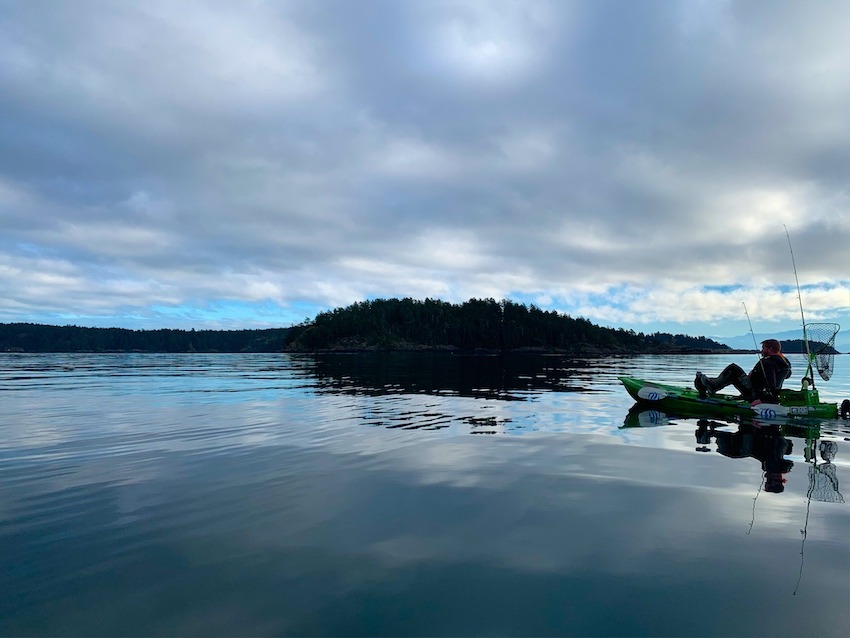
Kayak Fishing on Vancouver Island
Regardless of how you choose to get on the water, you’ll need to take into account different safety considerations than in summer. There are fewer vessels available to come to your aid in the winter, and hypothermia will set in within seconds. Please do yourself a favour and ensure the condition of your communications and safety equipment before heading out on the water.
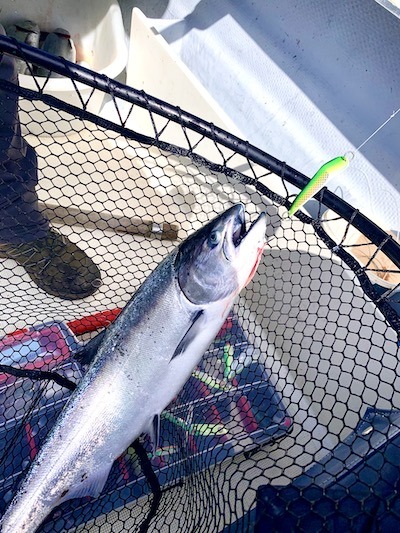
Winter Chinook Hooked up
Now that you are prepared and excited to go fishing for winter Chinook, I’ll let you in on why this is one of my favourite fisheries. Winter salmon are an absolute pleasure to have on your dinner plate! The meat colour varies from very white to pink to red, but regardless of colour these young fish store nutrient-rich proteins and lipids including Omega-3 fatty acids, vitamin B12, niacin, and selenium. All those scientific terms mean is that you’ll find winter Chinook to have a beautifully delicate and simultaneously rich flavour that is healthy and delicious. Keep it simple and cook it fresh on the barbecue or in the oven. And my advice to everyone cooking any fish is to cook it until it’s done … and then stop!
This article appeared in Island Fisherman magazine. Never miss another issue—subscribe today!
3 Comments
Leave A Comment
Visit the Store
$34.99
$34.99
Featured Catch
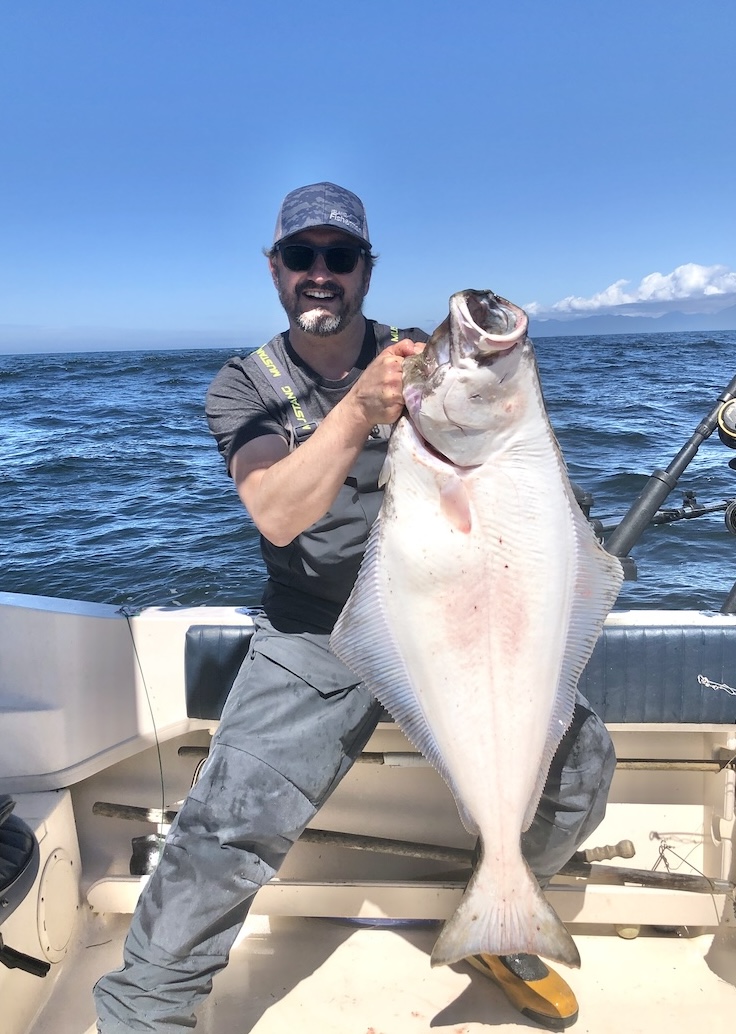
Joel Unickow halibut (Photo: Rob Frawley Lucky Strike Sportfishing Tofino)
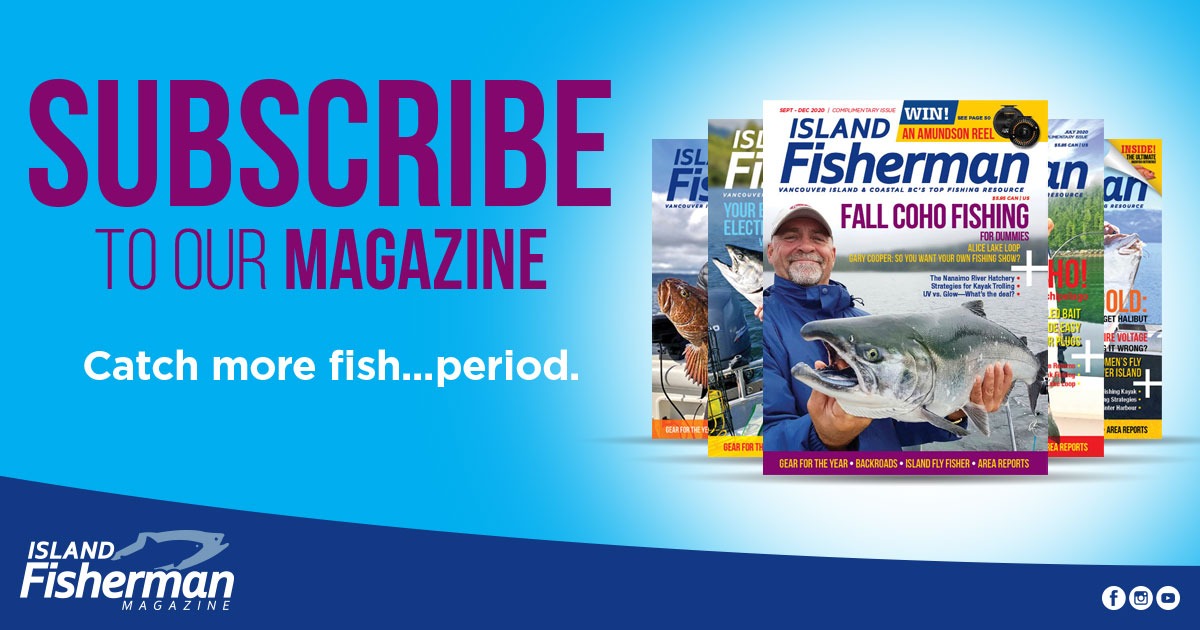

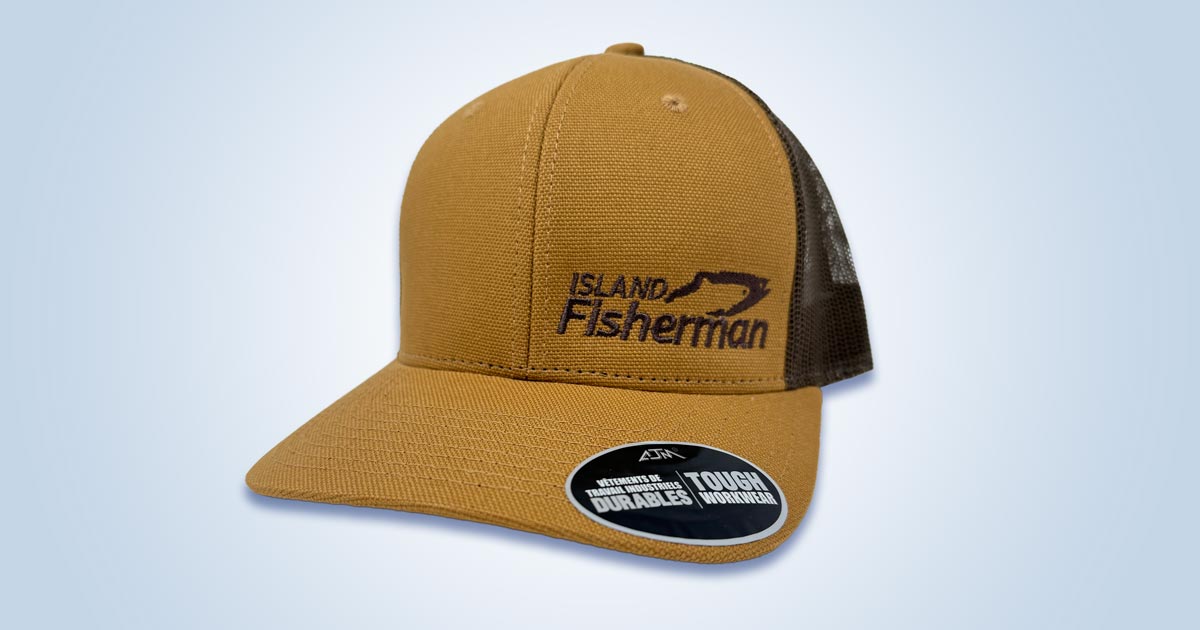

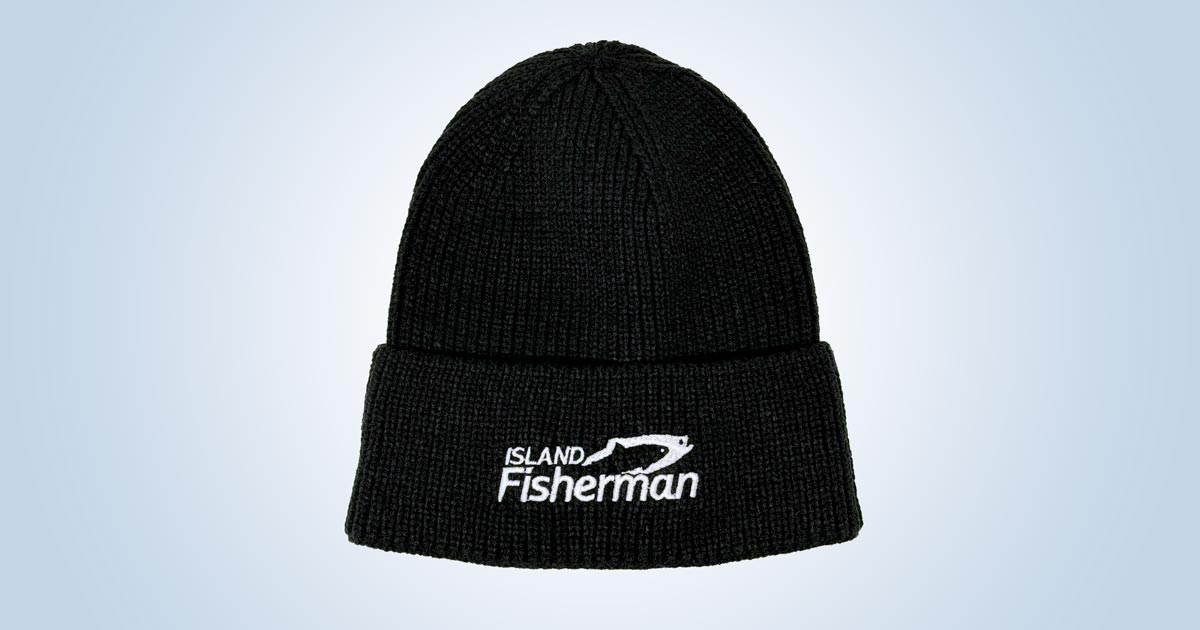
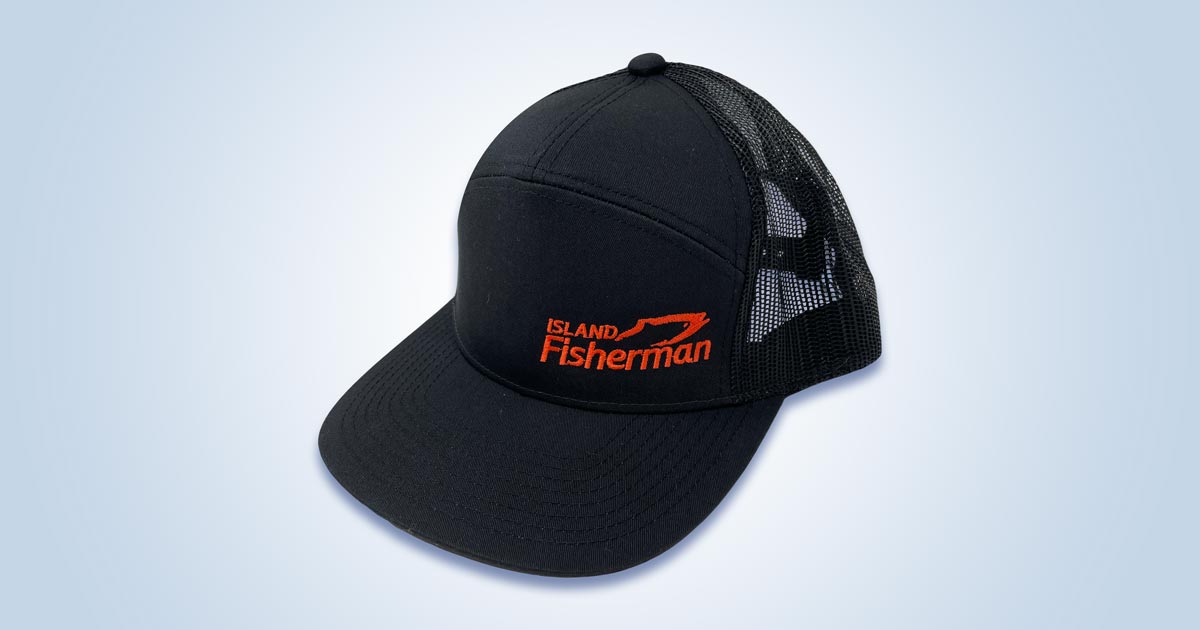
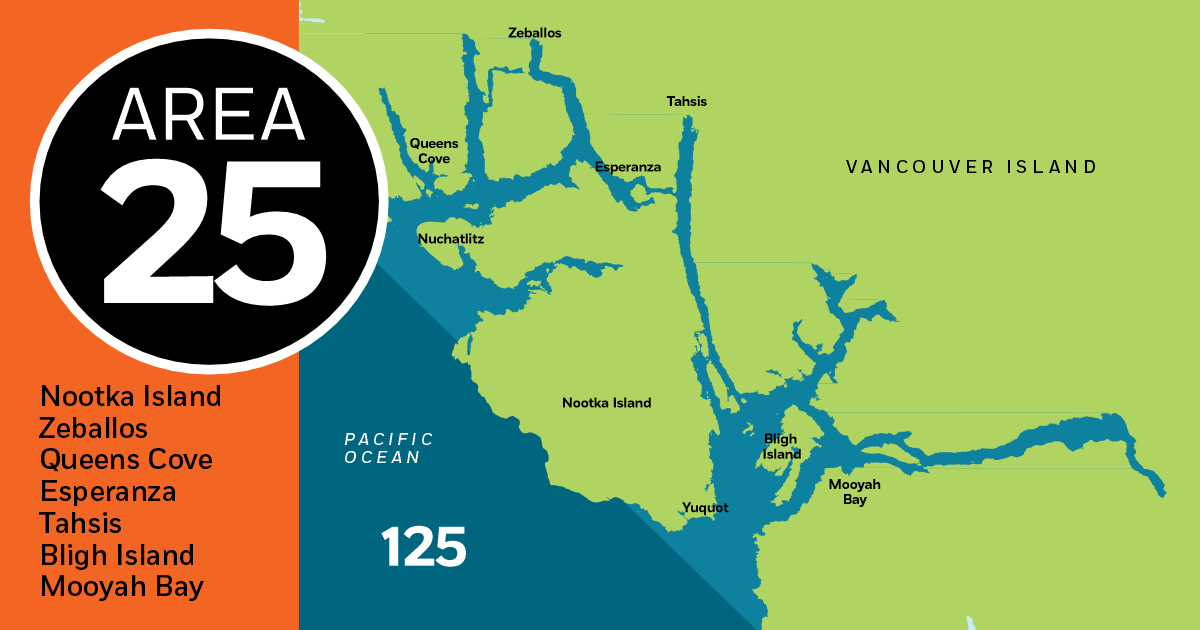
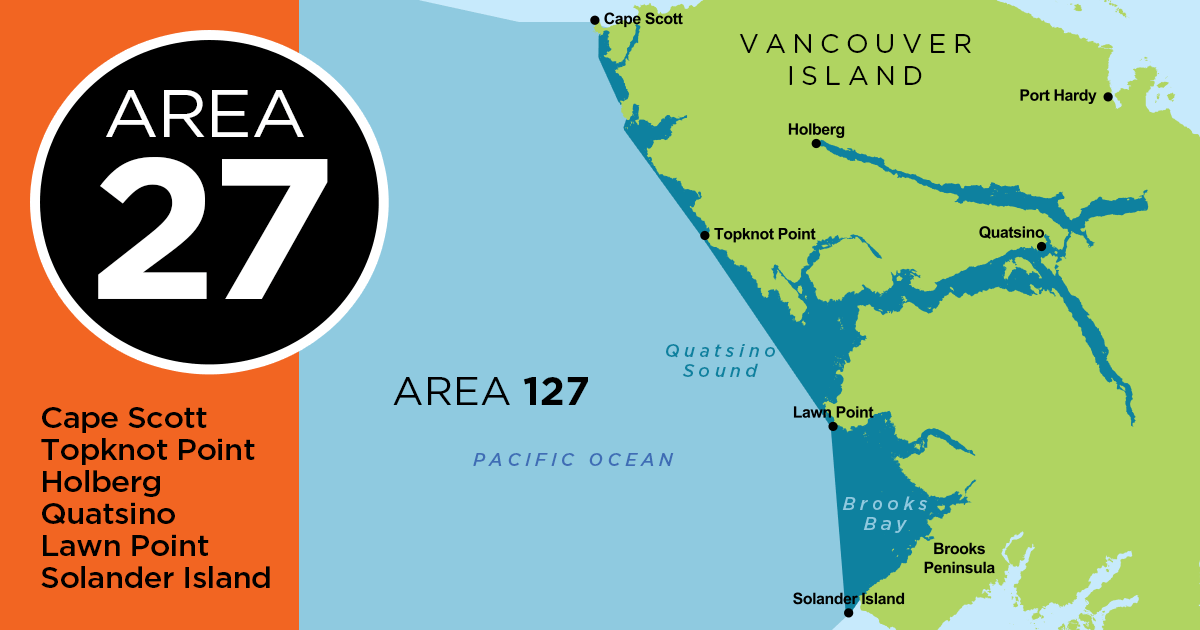
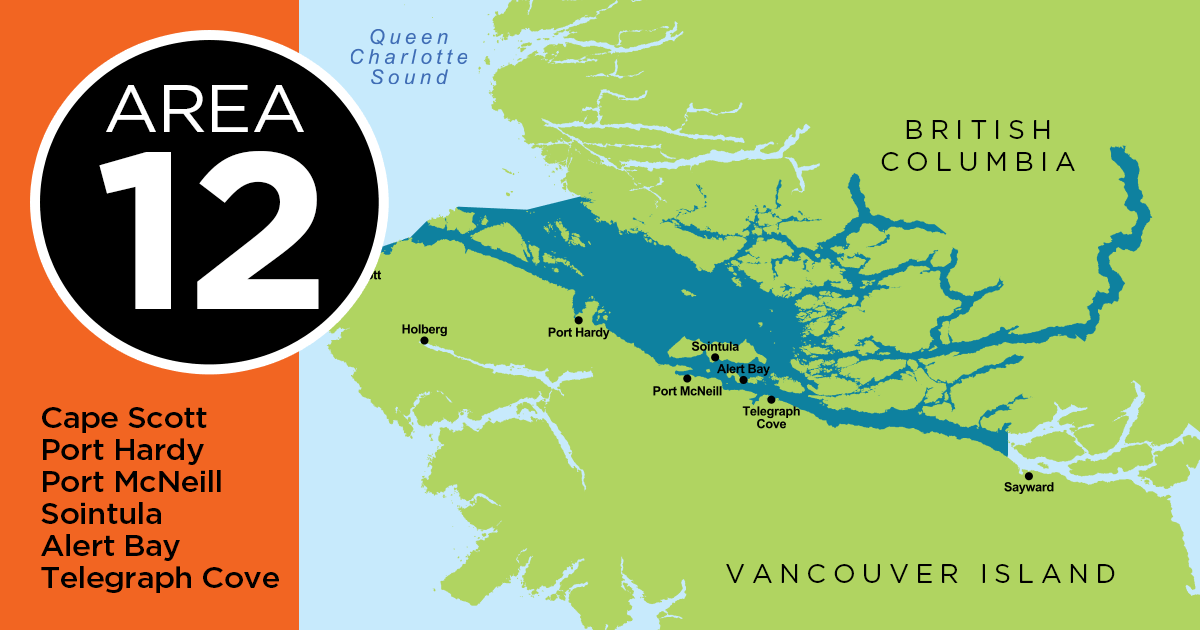
Deep and kayak don’t resonate with me except for jigging. Any other ideas?
Many kayak guys run downriggers. Just requires a bit more planning.
Where do you kayak fish for winter Chinook?